Pride Helped Me Discover My Style
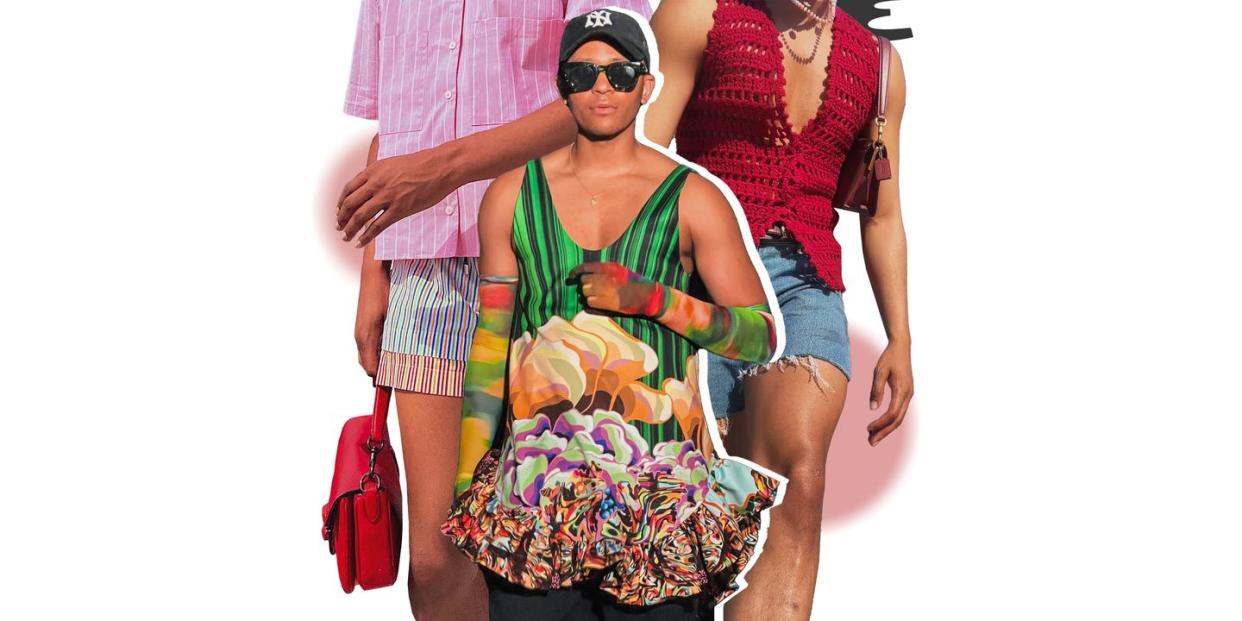
While commuting to my first New York City Pride in 2018, the words of my fellow Jehovah’s Witness Sister felt so embedded in my ears, it were as if they echoed through the A Train I rode downtown. Earlier that week after congregation worship, Sister Jackson said the parade was nothing more than a disturbance to her otherwise uneventful Christopher Street walk-up apartment. Unbeknownst to her and the rest of my congregation at the time, just a few short days later I would be walking amongst those disruptors as part of my employer's float group and, more importantly, as part of the millions of queer people celebrating their place in the world.
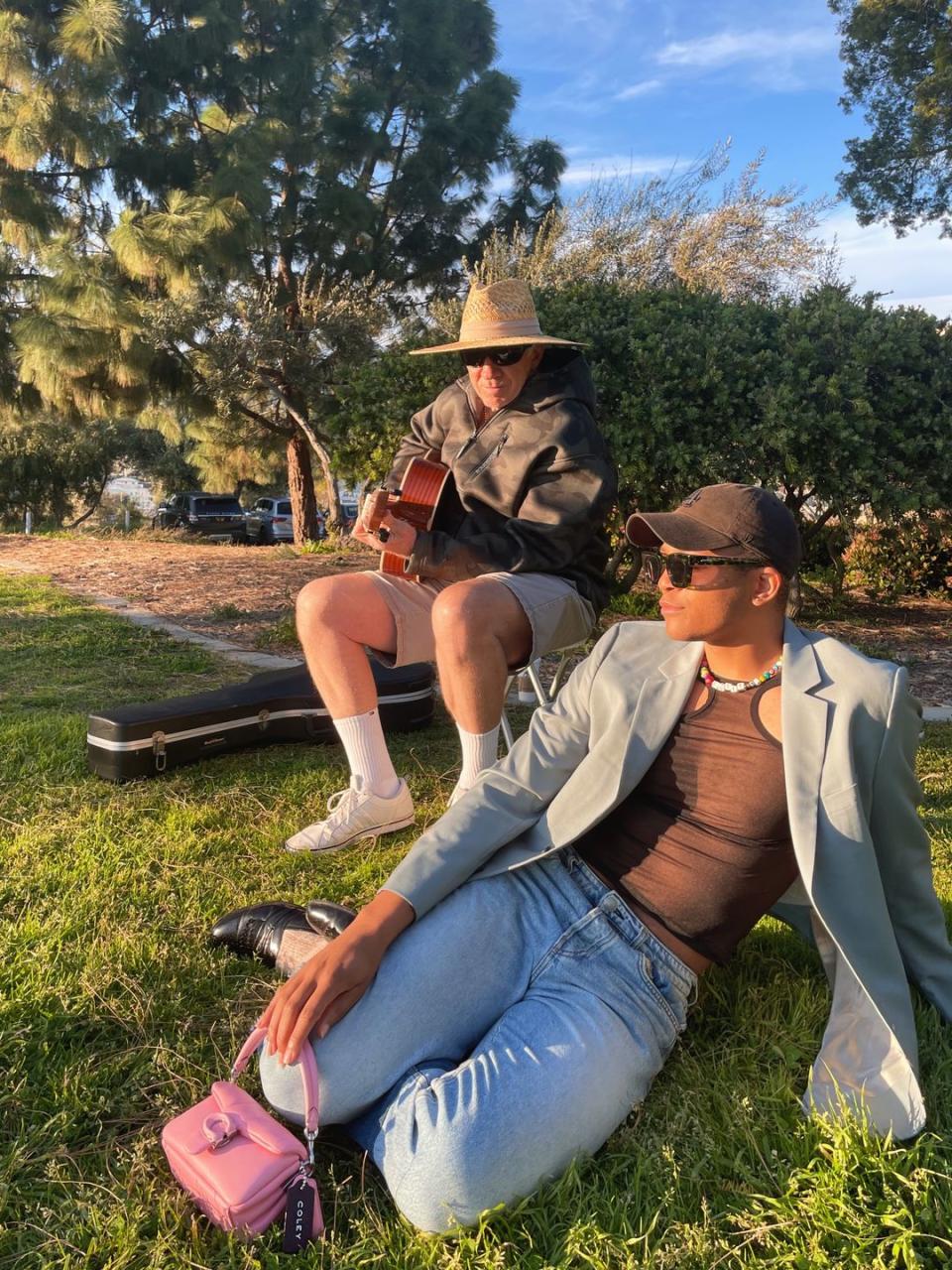
I already had an outfit ready: a T-shirt for branding, sneakers for walking, shorts for strutting, and sunnies for hiding from her and others who didn’t yet know I was gay. Picking everything out came easy. Making my way to the parade check-in line? Not so much. The image of my Sister dropping her porcelain tea cup at the sight of me, then Brother Habersham, with oiled-up legs, denim shorts, and a cut-up tee was almost enough to take me out of the parade all together. But I already committed to my colleagues, and thought, “What are the odds she’ll see me? Slim to none. Less so, if I wear sunglasses.” If I played my cards right, I could enjoy my first Pride in New York without outing myself.
In the twelve months pre-Pride ‘18, I realized and accepted I was gay—a revelation prompted by a random encounter with an attractive, older-than-me man visiting from Portland. He gifted me a few firsts: my first kiss with a man, my first date with a man, and the first time a man went down on me. The burden of those gifts, though, was an unignorable desire to be with a man regularly, not randomly. I attempted to suffocate those feelings for years with prayer, knowing how inconvenient liking men would be for me, a third-generation Jehovah’s Witness, who was more familiar with preaching Saturday mornings than the queer “lifestyle” I’d only observed secretly and very occasionally on TV.
To conceal those feelings, my style preference at the time was cis-het camouflage, worn to mimic image my close friends and loved ones from the church knew. As a Jehovah’s Witness, I was often reminded of the importance of “dress” and “grooming”—that is, what we choose to wear and how we accouter ourselves. Our dress and grooming make an introduction before we’re able to with words. And as a devout Christian looking to convert others, I suppose the preferred introduction was one of cleanliness and righteous superiority. Nothing says “God fancies me more than you” like a pressed, spread collar shirt and pleated slacks.
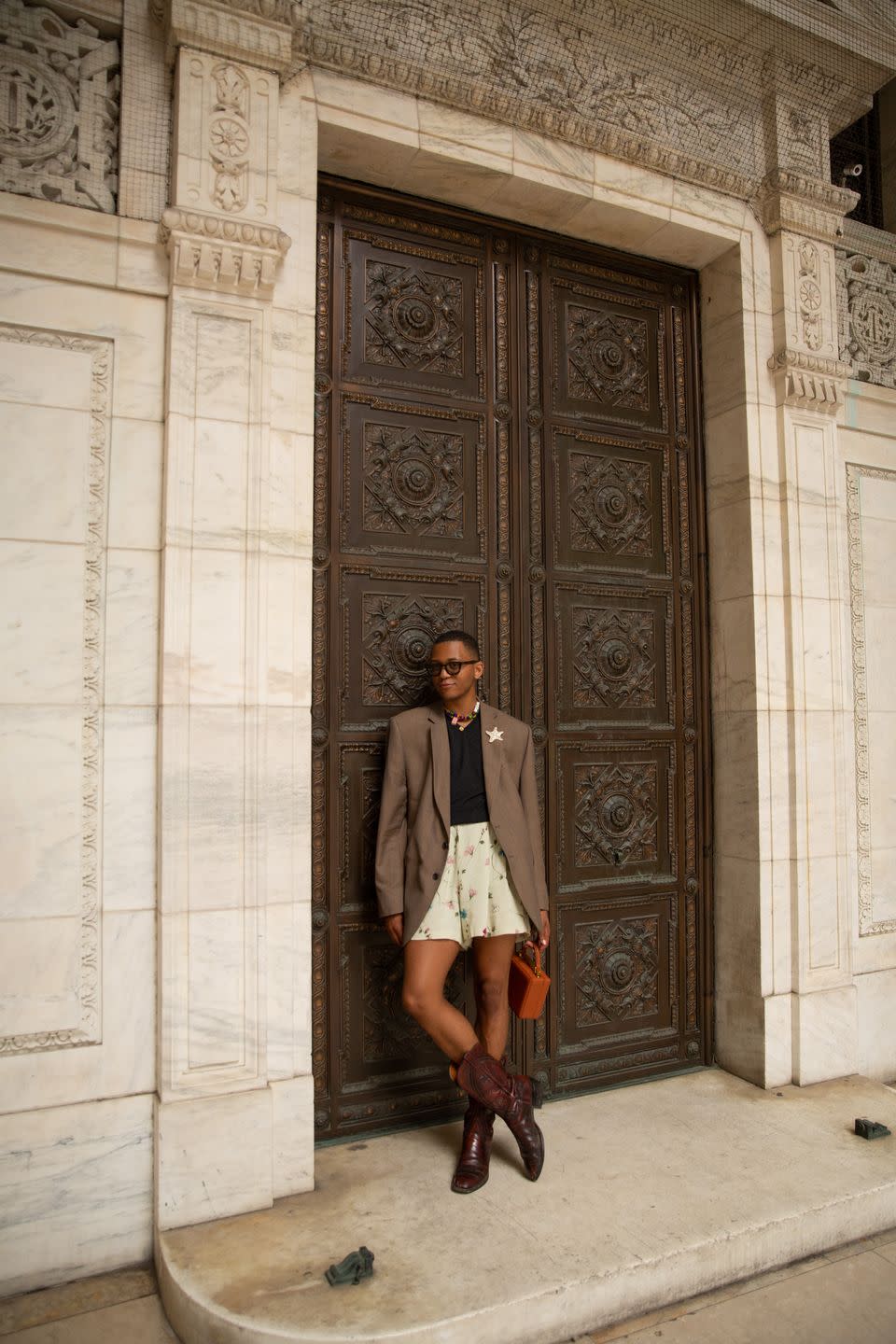
Then, later that year, the unthinkable happened: after months of stripping off my neckties for some SSB (secret “sinful” behavior), I accepted my sexuality, an important first step. In that time, I recognized the world I was born into—one of scripture, ministry, and congregation Elders who discipline quickly—was no longer an option. If I was going to walk in Pride parades for the rest of my life, I didn’t want to hide from versions of Sister So-and-So.
Coming out to my friends and family was difficult, as was dealing with the emotional labor that follows when small-minded people can’t accept what is fundamentally you loving yourself. I feared my loved ones from the church would judge and abandon me, as their interpretation of scripture encouraged them to. Unfortunately, I was right. I anticipated feeling the pain from their rejection, but the freeness that followed was a welcome surprise.
When I officially departed the church in 2019, I abandoned my belief system and shed many circumstantial relationships. Amidst the upheaval, I found comfort in my style. For years, blazers, which I wore weekly to church and ministry, were a part of my personal identity. Now without a place to wear them regularly, they popped up in seemingly inappropriate settings — from my very casual creative agency office to the grocery store, Barracuda Bar on 22nd Street, and other places that don’t demand a business casual dress code. During a time I felt stripped of the only identity I knew, my blazer became my blanket.
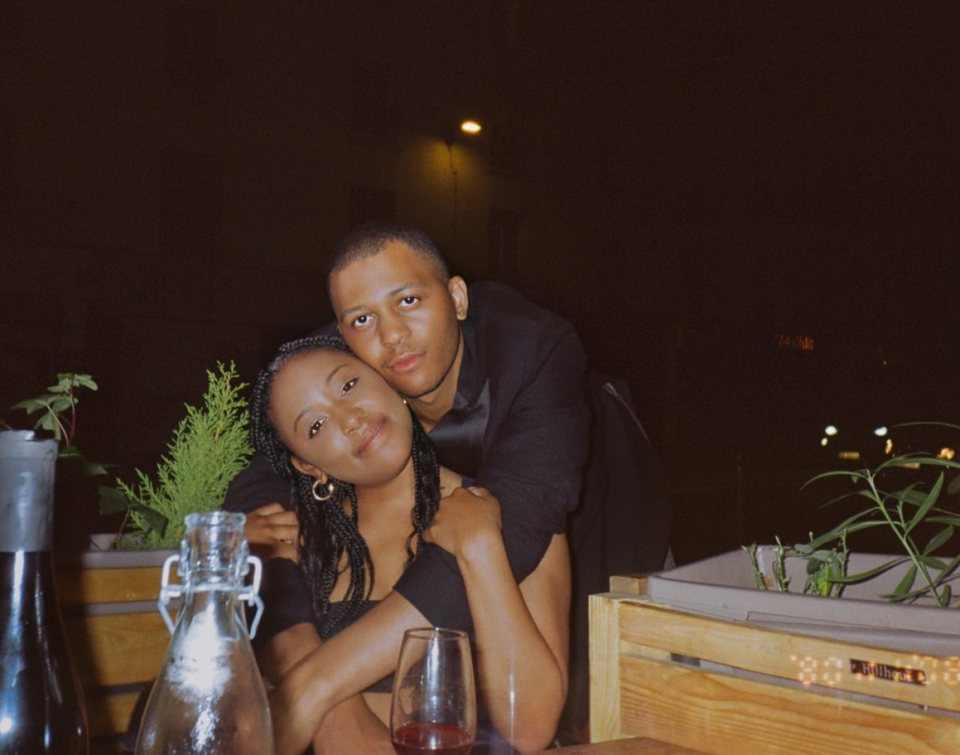
If Pride didn’t occur in June, I suppose I would’ve felt inclined to wear my safety blazer-blanket to the parade that year. In hindsight, I didn’t need one. I walked the 2019 parade with more joy than the year before, letting the love from strangers heal the wounds my church community left. Without feeling pressure to constantly look over my shoulder, I experienced the fun that walking in the parade has to offer—dancing, capturing content with friends, choreographing routines with queer majorettes, and even meeting the iconic women of Danity Kane; all against a backdrop of faces equally happy to be sharing the moment together.
Following the parade, I changed into an outfit for rounds at the gay bars with new friends, dressing in what I understood to be the pride wardrobe brief at the time: Less is more. I wore a cropped tank for touching, shorts for dancing, and boots for the fun of it—a new uniform for my new world. Putting it on was an important lesson: I can wear anything and the world will keep spinning. In fact, my world might spin faster.
Over the years, I've used Pride as an opportunity to test the extent of my style limits, trying looks that lived in my head but hadn’t yet debuted IRL. It was during Pride that I experimented with makeup and heels for the first time, and grew to love the tension between classically feminine silhouettes and more masculine pieces. There is no better place to evolve one’s personal style than a month-long celebration of individuality.
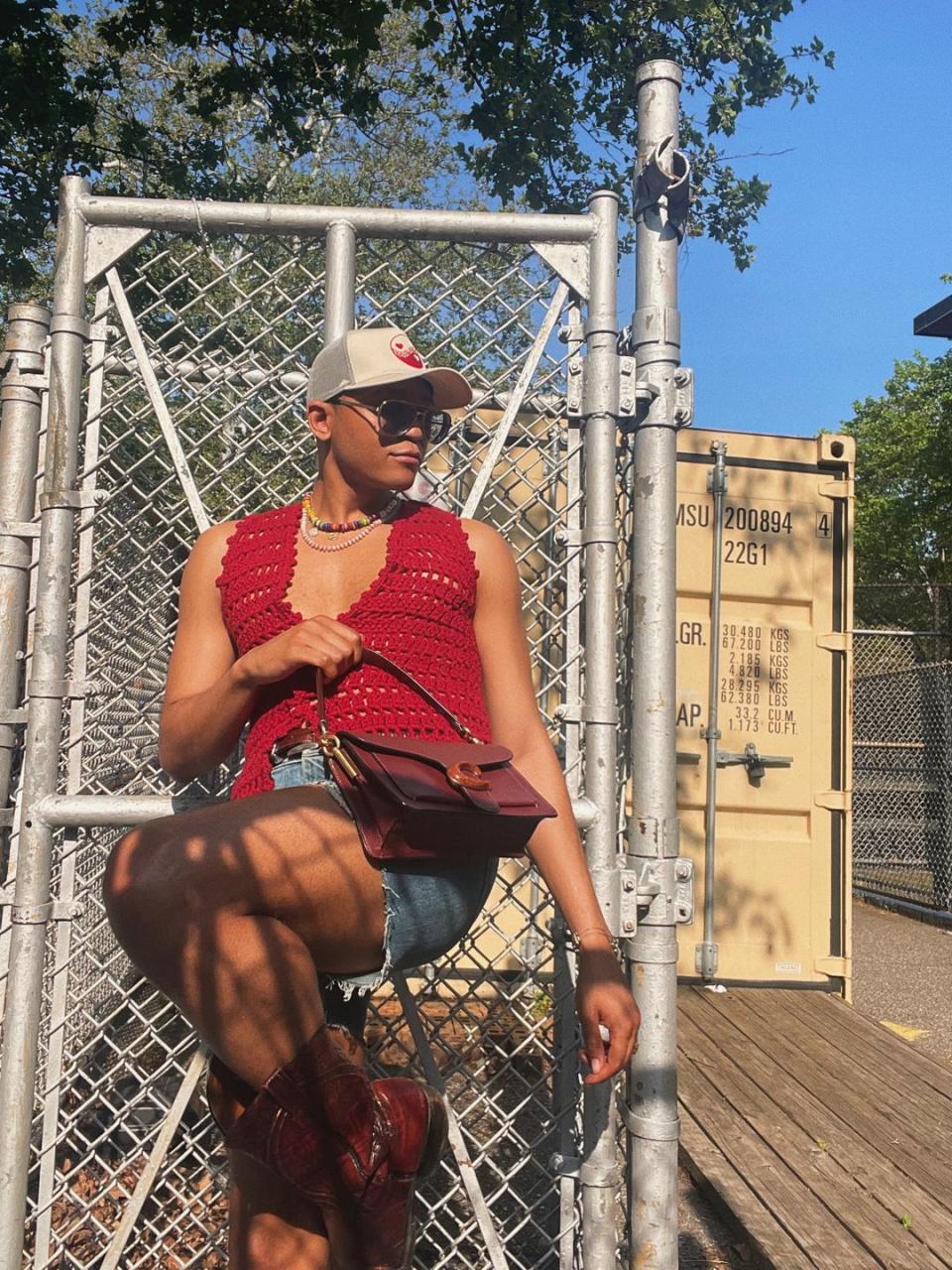
I realized how far my style and confidence had come when I wore platform Syro boots on Nostrand Avenue in Brooklyn last spring. It was one of my bravest acts. Knees up, I wore a variation of a look that, at some point, became my signature: a blazer, basketball shorts, beaded jewelry, and tortoise-shell glasses. It would’ve been so easy to walk in sneakers or even loafers, but my spirit that morning called for a pair of vertiginous boots.
I only had the courage to zip up my Syros and walk to my local coffee shop because in the years prior I’d practiced adjacent acts of otherness—eyeliner on the A train, a houndstooth Sandro skirt in SoHo, and a neck wrapped in my favorite Don’t Let Disco necklaces several times over—I’d endured the double takes that come when a curious eye, sometimes innocent, sometimes malicious, meets a six-foot man flirting with new ways of gender expression.
It turns out those eyes, while uncomfortable, last only as long as a blink of yours. There are exceptions, of course - the enduring one that stays on you to strike fear, the ferocious one that grows into something more serious, and others I’m now able to identify and brush off. But for every one of those uncomfortable looks, there’s a look of approval from someone who gets it. Just this month as Pride began, a barista at my neighborhood coffee spot complimented the completely unnecessary, but wholly me sequin tank I wore to pick up my morning matcha; the first many “those who get it, get it” moments of June.
I didn’t participate in the parade this year. Instead, I turned 30 in Paris, wearing what felt most like me that day—a smart Acne blazer, Issey Miyake shorts, and boots. While I’ll always engage in Pride in some capacity, I don’t need a parade, affinity month, or party to justify my style choices. There are some days I feel very J.Crew and want to don a denim-and-blazer combo. On other days, an off-the-shoulder dress over slacks for dinner feels appropriate. Style exists for us to say something about ourselves to the world. And all I’m trying to say these days is I’m very comfortable in my skin.
You Might Also Like

